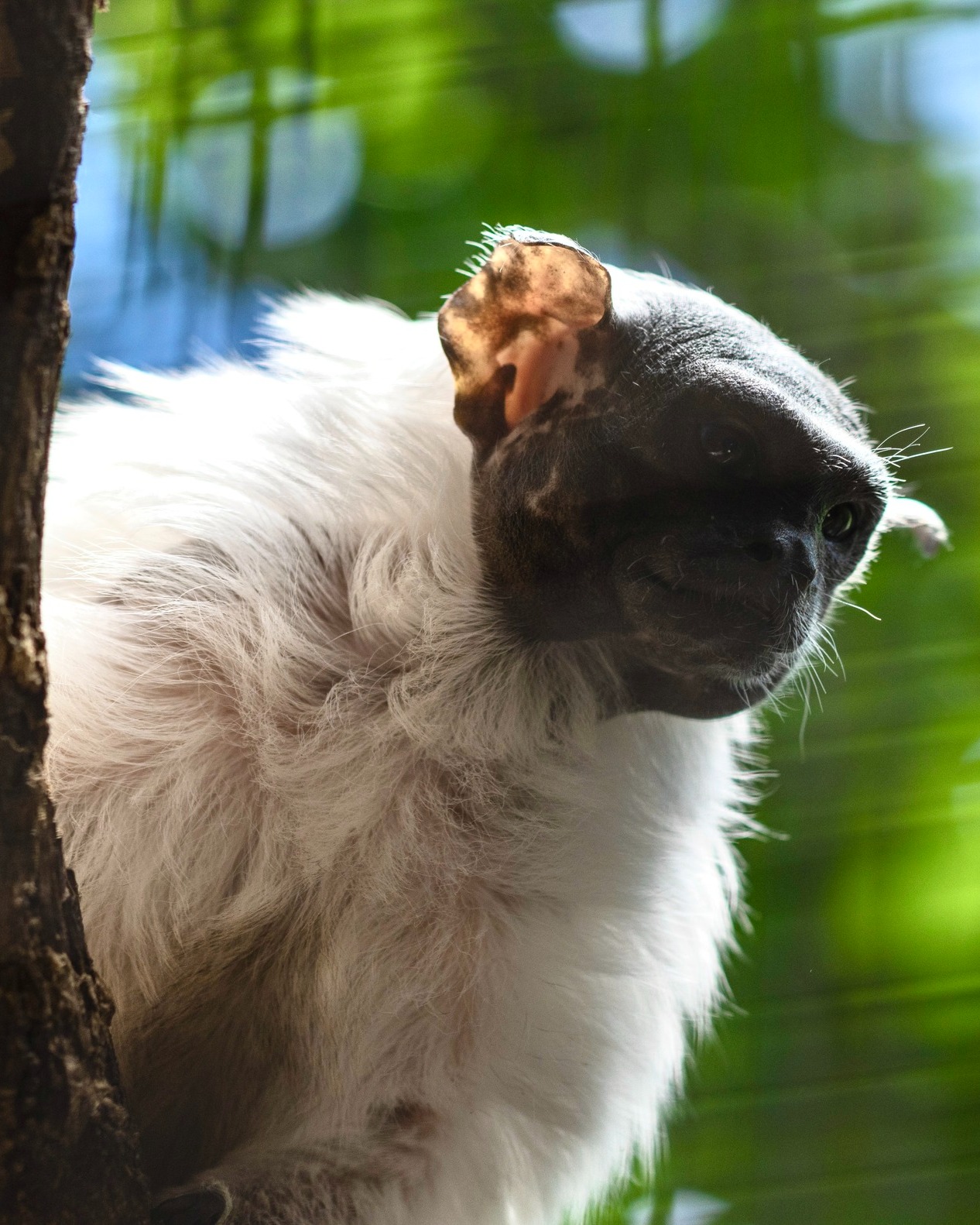- Overview of the pied tamarin’s habitat and distribution in Brazil
- Conservation status and threats facing the pied tamarin
- Efforts by organizations like DWA to preserve the species and its habitat
- Importance of biodiversity and the role of the pied tamarin in local ecosystems
- Zoological insights into the behavior and social structure of the pied tamarin
The pied tamarin (Saguinus bicolor) is a small yet crucial primate native to a limited region in Brazil, specifically the Amazon rainforest near Manaus. This tiny mammal, characterized by its distinctive white fur and black face, inhabits a demanding environment. Its existence is constrained to fragmented tracts of primary and secondary forests, making it highly susceptible to environmental changes. The pied tamarin’s preference for lowland forests demonstrates its adaptability but also highlights its dependence on particular ecological conditions that are rapidly being altered.
Endemic to this specific locality, the pied tamarin faces several threats that critically endanger its future. Urban sprawl, deforestation for agriculture, and infrastructure development are the primary drivers of habitat loss and fragmentation. This ongoing shrinkage not only destroys their living spaces but also decreases the available food resources, forcing these primates into direct competition with other species. Moreover, the introduction of invasive species and disease further exacerbates threats to their survival. The International Union for Conservation of Nature (IUCN) lists the pied tamarin as endangered, underscoring the urgency for comprehensive conservation efforts.
Organizations such as the DWA (Divergent Wildlife Association) are at the forefront of initiatives aimed at preserving the pied tamarin and its habitat. Through collaboration with local communities, governmental bodies, and international partners, significant strides are being made to address the threats faced by this endangered species. The activities include creating and managing protected areas, restoring degraded habitats, and implementing breeding programs that could bolster wild populations. Promoting sustainable land use and involving local inhabitants in conservation projects are key strategies employed to balance ecological preservation with human needs.
Biodiversity is the backbone of ecosystem resilience, and the pied tamarin plays a vital role in the biodiversity of the Amazon. As seed dispersers, these primates contribute significantly to the regeneration of forest habitats. This function is essential not only for ecological balance but also for maintaining the integrity of plant species diversity. Protecting the pied tamarin and ensuring its survival, therefore, has meaningful implications for the broader environmental health of its native region and the communities that rely on these ecosystems.
From a zoological perspective, the pied tamarin is intriguing not just for its appearance but for its social behavior. Living in small social groups led by a dominant breeding pair, these primates exhibit complex interactions and strong family bonds. Their vocalizations are diverse, serving crucial roles in group communication and cohesion. Observing these behaviors provides valuable insights into primate social structures and their evolutionary significance. This knowledge enriches our understanding of primate biology and informs conservation strategies, ensuring that interventions align closely with natural behaviors and social needs.
The tale of the pied tamarin is one of significant conservation importance. Its plight alerts us to the broader environmental challenges faced by biodiversity worldwide, particularly in regions where human impact is most pronounced. As we learn more about this fascinating species, the responsibility lies with us to advocate for thoughtful stewardship of the environment, safeguarding the future of the pied tamarin and the many other species that share its habitat. In doing so, we contribute to a thriving, balanced world where both wildlife and humans can prosper.
*****
Source Description
Meet the pied tamarin—small in size, big in conservation importance. 🐒
Native to a limited area in Brazil, this endangered species is part of vital efforts to protect biodiversity at DWA and beyond.


